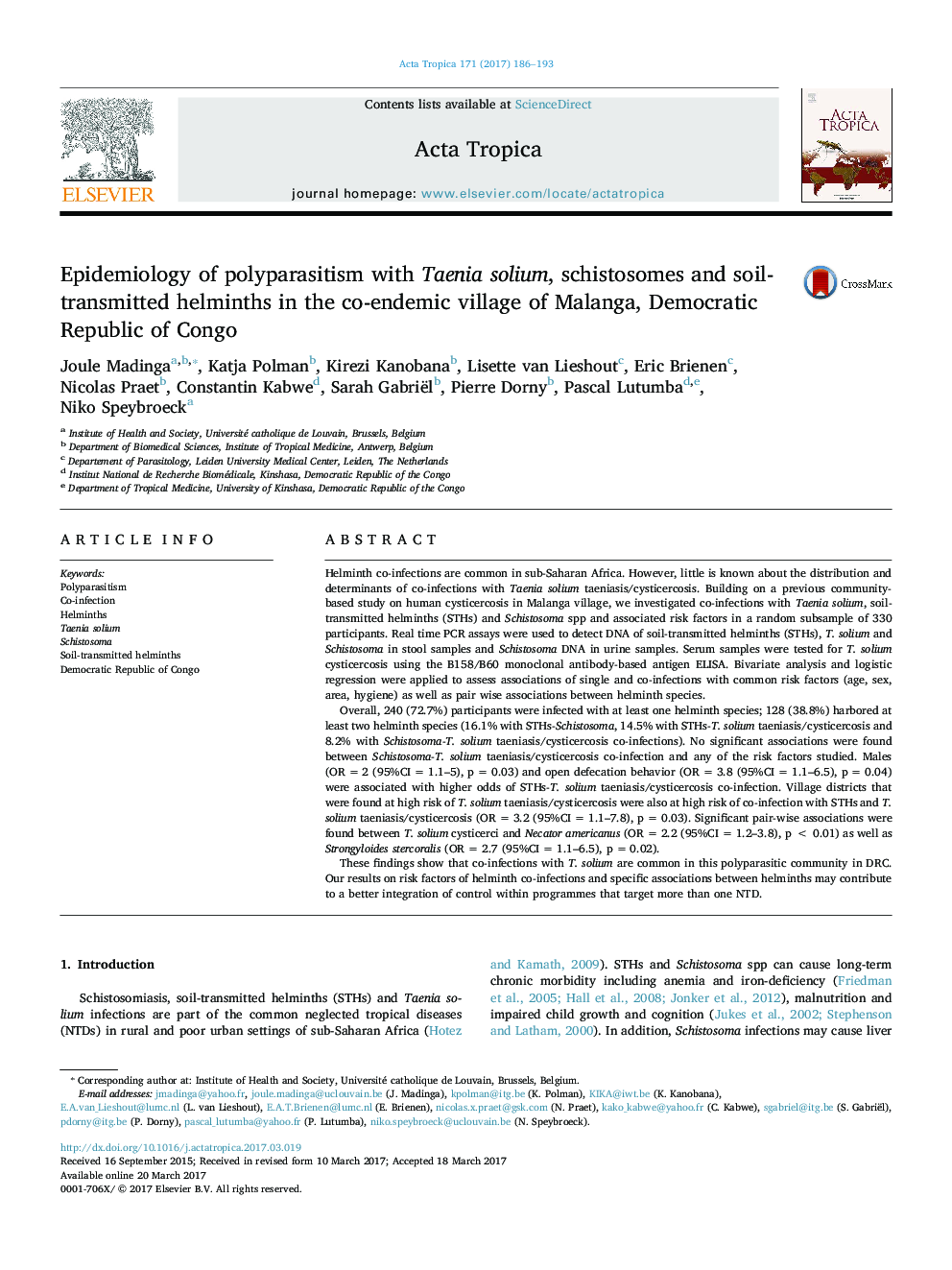| کد مقاله | کد نشریه | سال انتشار | مقاله انگلیسی | نسخه تمام متن |
|---|---|---|---|---|
| 5671177 | 1592753 | 2017 | 8 صفحه PDF | دانلود رایگان |

- We assessed risk factors of co-infections with Taenia solium, STHs and Schistosoma.
- Co-infection with STHs and T. solium taeniasis/cysticercosis was associated with: Male sex, open defecation behavior and village district.
- T. solium cysticerci was significantly associated with N. americanus and S. stercoralis.
Helminth co-infections are common in sub-Saharan Africa. However, little is known about the distribution and determinants of co-infections with Taenia solium taeniasis/cysticercosis. Building on a previous community-based study on human cysticercosis in Malanga village, we investigated co-infections with Taenia solium, soil-transmitted helminths (STHs) and Schistosoma spp and associated risk factors in a random subsample of 330 participants. Real time PCR assays were used to detect DNA of soil-transmitted helminths (STHs), T. solium and Schistosoma in stool samples and Schistosoma DNA in urine samples. Serum samples were tested for T. solium cysticercosis using the B158/B60 monoclonal antibody-based antigen ELISA. Bivariate analysis and logistic regression were applied to assess associations of single and co-infections with common risk factors (age, sex, area, hygiene) as well as pair wise associations between helminth species.Overall, 240 (72.7%) participants were infected with at least one helminth species; 128 (38.8%) harbored at least two helminth species (16.1% with STHs-Schistosoma, 14.5% with STHs-T. solium taeniasis/cysticercosis and 8.2% with Schistosoma-T. solium taeniasis/cysticercosis co-infections). No significant associations were found between Schistosoma-T. solium taeniasis/cysticercosis co-infection and any of the risk factors studied. Males (OR = 2 (95%CI = 1.1-5), p = 0.03) and open defecation behavior (OR = 3.8 (95%CI = 1.1-6.5), p = 0.04) were associated with higher odds of STHs-T. solium taeniasis/cysticercosis co-infection. Village districts that were found at high risk of T. solium taeniasis/cysticercosis were also at high risk of co-infection with STHs and T. solium taeniasis/cysticercosis (OR = 3.2 (95%CI = 1.1-7.8), p = 0.03). Significant pair-wise associations were found between T. solium cysticerci and Necator americanus (OR = 2.2 (95%CI = 1.2-3.8), p < 0.01) as well as Strongyloides stercoralis (OR = 2.7 (95%CI = 1.1-6.5), p = 0.02).These findings show that co-infections with T. solium are common in this polyparasitic community in DRC. Our results on risk factors of helminth co-infections and specific associations between helminths may contribute to a better integration of control within programmes that target more than one NTD.
Journal: Acta Tropica - Volume 171, July 2017, Pages 186-193